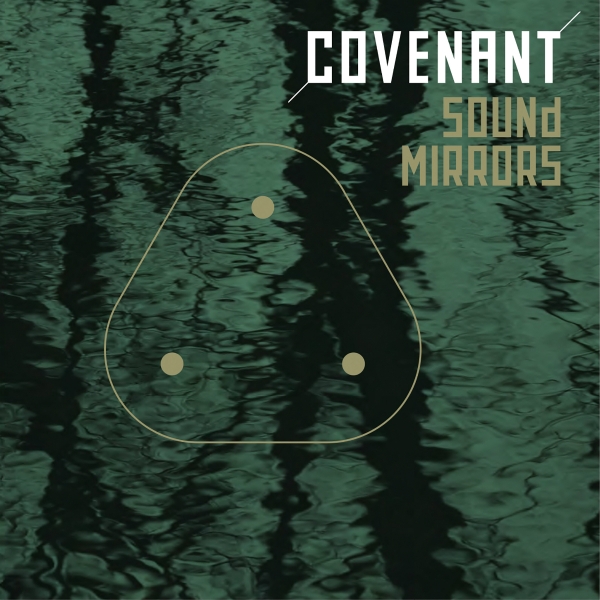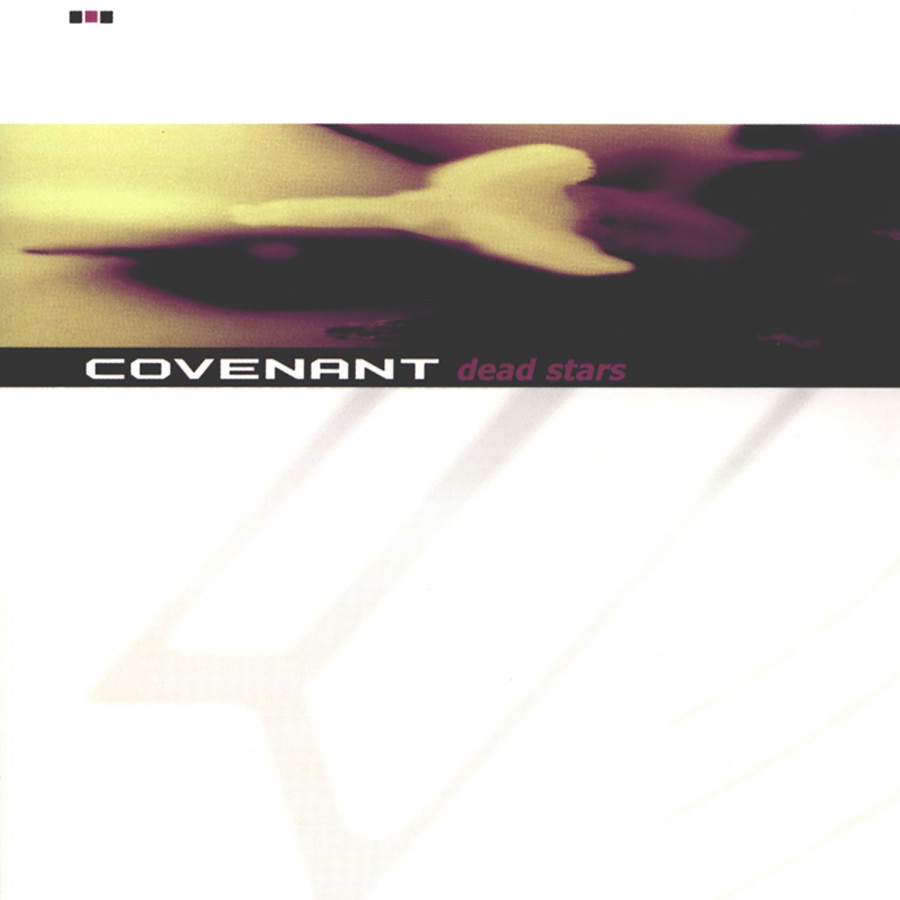Listen & Buy
Covenant. It’s a name that implies extraordinary commitment, a certain grandiosity, and a bond stronger than blood. As a name, Covenant—with its biblical overtones—was perhaps a bit ambitious for an upstart band of teenagers from southern Sweden armed with rudimentary electronics, but it ended up being extraordinarily fitting. Whether or not life subsequently imitated art or art subsequently imitated life is debatable, either way the band’s moniker ended up perfectly summing up the vision, grandeur, and brotherhood that is the band itself.
Beginning, as most bands do, as teenagers fiddling with instruments in their parents’ basement, the earliest incarnations of the band featured, astoundingly, six members. Over time the line-up trimmed down to a cast of three: vocalist and songwriter Eskil Simonsson, keyboardist and lyricist Joakim Montelius, and keyboardist Clas Nachmanson. Their first song written as the contemporary incarnation of Covenant was “Replicantâ€, a track which, Simonsson notes, was such a quantum leap forward for the band that he was certain it would be the last one he’d ever write. Little did he know, a deal with Swedish label Memento Materia and an entire album’s worth of material would soon follow.
That album would be Covenant’s first release, Dreams of a Cryotank. An ambitious effort, Dreams of a Cryotank would reflect the influence of visionary works by Ridley Scott and Arthur C. Clarke and the cold, rhythmic precision of their electronic music forbearers on everything from obvious club tracks to a 23-minute long ambient noise piece called “Cryotank Expansionâ€. Most notably Dreams of a Cryotank would spawn an important early club hit for the band, “Thereminâ€, a track which can still be heard on dancefloors today.
By this point Covenant was already making a name for themselves through their live shows. Early live incarnations involved elaborate costuming and included such otherworldly figures as “space samuraiâ€. Over time the set design became less ostentatious but the core intensity of the band’s live performance remained. Their connection with early audiences would garner influential recruits. One of these would be Stefan Herwig, then manager of German record label Off Beat. By early 1995 Covenant would have its first record deal outside of their native Sweden.
Back in the studio, the band went to work on their sophomore album. If the aim was to produce a record which matched the scope and success of Dreams of a Cryotank, they would have been aiming too low. What resulted from these sessions would be Sequencer, arguably one of the band’s greatest works and the vehicle that would launch them onto the international forefront. Everything about Sequencer was a step forward, from the densely-layered sonic mélange to the emotionally-nuanced lyrics.
Sequencer’s success would mark an early turning point in the band’s career. It would result in the band embarking on their first European tour—opening for Steril and Haujobb—and their first foray into North America, having been newly signed to San Francisco-based 21st Circuitry Records. With North America playing a fast game of catch-up, the Theremin EP and the US versions of Dreams of a Cryotank and Sequencer had been released in rapid succession. The response was overwhelming enough to warrant the swift organization of their first US tour.
At the same time that “Stalker†and “Figurehead†were conquering clubs across Europe, the band were back in their studio, beginning what would be a decidedly different third effort. Stripped of Sequencer’s dense atmospherics, Europa would stand in edgier, minimalist contrast to the band’s previous efforts. And would also signal—with tracks like “Go Film†and “I Amâ€â€”the band’s systematic takeover of the dancefloor.
The subsequent tours for Europa would be equally noteworthy. In the US they’d soon discover their crowds had gotten exponentially larger. Case in point, at their first show on this tour, in Los Angeles, merch sales would be so massive such that it forced the record label to reprint t-shirts after only one concert. In Europe, they would embark on a headlining tour—a first for the band—with VNV Nation as their support act.
By the time the band decamped yet again for their studio in Helsingborg to work on their fourth studio record, they were in a pretty good place. Now ensconced on Dependent Records in Europe and Metropolis Records in North America, the band was uniquely primed for breakthrough success. And so United States of Mind was born. Delivering on the earlier, poppy promise of Europa, United States of Mind would truly take the band to the next level. In North America, the record’s second single “Dead Starsâ€, would have such extraordinary impact it continues to be an influential club hit to this day. In Germany, the band opted for a different song “Der Leiermannâ€, to be the second single. With lyrics borrowed from the Wilhelm Müller poem by the same title, the band’s first German language song would go a long way to establishing them as a major act in Middle Europe.
The new decade would mark substantial changes for both the world and for the band. A new millennium. A new worldview. A new album. For Covenant this would mean a change of record labels—from Dependent to Sony subsidiary KA2—and a change of scenery for two-thirds of the band—Simonsson to Berlin; Montelius to Barcelona, with only Nachmanson remaining in their native Sweden.
The switch to KA2 would be significant for the band in more ways than one. They would enlist the help of Rammstein producer Jacob Hellner—another first for the band. The album that resulted, Northern Light, would be one of the band’s finest, spawning hits like “Call the Ships to Port†and “We Stand Aloneâ€. Covenant would also embark on their first big budget music video—for the album’s second single, “Bulletâ€â€”which would also enter rotation on several European video channels. Following Northern Light would be an extended period of touring during which Covenant would cover, once again, Europe, North America and for the first time, Australia.
By the midpoint of the decade more changes were afoot. The band switched labels once more, this time to renowned German label SPV. A spate of headlining performances at major festivals in Europe would redefine their already impressive reputation for stellar live shows. And the band, of course, would return to the studio. What ultimately resulted was Skyshaper, a richly nuanced album addressing a complicated range of emotions, from the grandiose and frenetic (“Sweet & Saltyâ€, “Ritual Noiseâ€) to the raw and melancholic (“Greater Than the Sunâ€, “The World is Growing Loudâ€). Shortly after Skyshaper’s release, Nachmanson amicably parted ways with the band and was replaced by Haujobb’s Daniel Myer. At first brought in exclusively for live shows, Myer was, in short order, asked to join the band permanently. Naturally, extensive touring followed, this time covering Europe, Russia, North America, South America, Australia, and finally, the Far East. Covenant, having toured for the first time five continents, had truly gone global. A DVD travelogue entitled In Transit, was even released to commemorate the occasion.
As the decade closed, Covenant embarked on yet a new direction with their seventh studio album, Modern Ruin. At once atmospheric and anthemic, deeply disconnected and yet deeply personal, Modern Ruin was an apt title for the maelstrom of beats and emotion it contained. Modern Ruin also marked another first for the band—the debut of Daniel Myer’s songwriting collaborations.
After touring extensively for Modern Ruin—more than 40 countries on five continents—Covenant’s roster rotated yet again. Daniel Myer amicably parted with the love and support of Covenant in order to focus on his own projects, and Joakim Montelius made the decision to support the band as a studio-only member. Newly providing live support for Covenant is keyboardist Daniel Jonasson, co-founder of the Swedish band Dupont, and a superstar DJ and prominent concert promoter in his own right.
With 2011’s Modern Ruin still a fresh memory, Covenant is now already back in the studio working on a follow-up, tentatively titled Leaving Babylon. In order to focus exclusively on the album, Covenant has even taken a break from live shows, only accepting a few special engagements, such as the sold out Amphi Festival Cruise on the Rhine this summer.
Featuring material that spans from Northern Light-era demos to brand-new creations, Leaving Babylon promises to be a bold new direction for the band. Beat-heavy yet introspective; Leaving Babylon is Covenant’s sonic exploration into uncharted emotional waters. It’s the feeling of memory made sound—the melancholy of Sweden in the wintertime, the strange beat of electric hearts, and the longing for forgotten parties.
It's time to listen. It's time to heed the sound of the sirens. What are they telling us? Who is really playing the tunes we dance to?
We are not Leaving Babylon. Not yet.






















